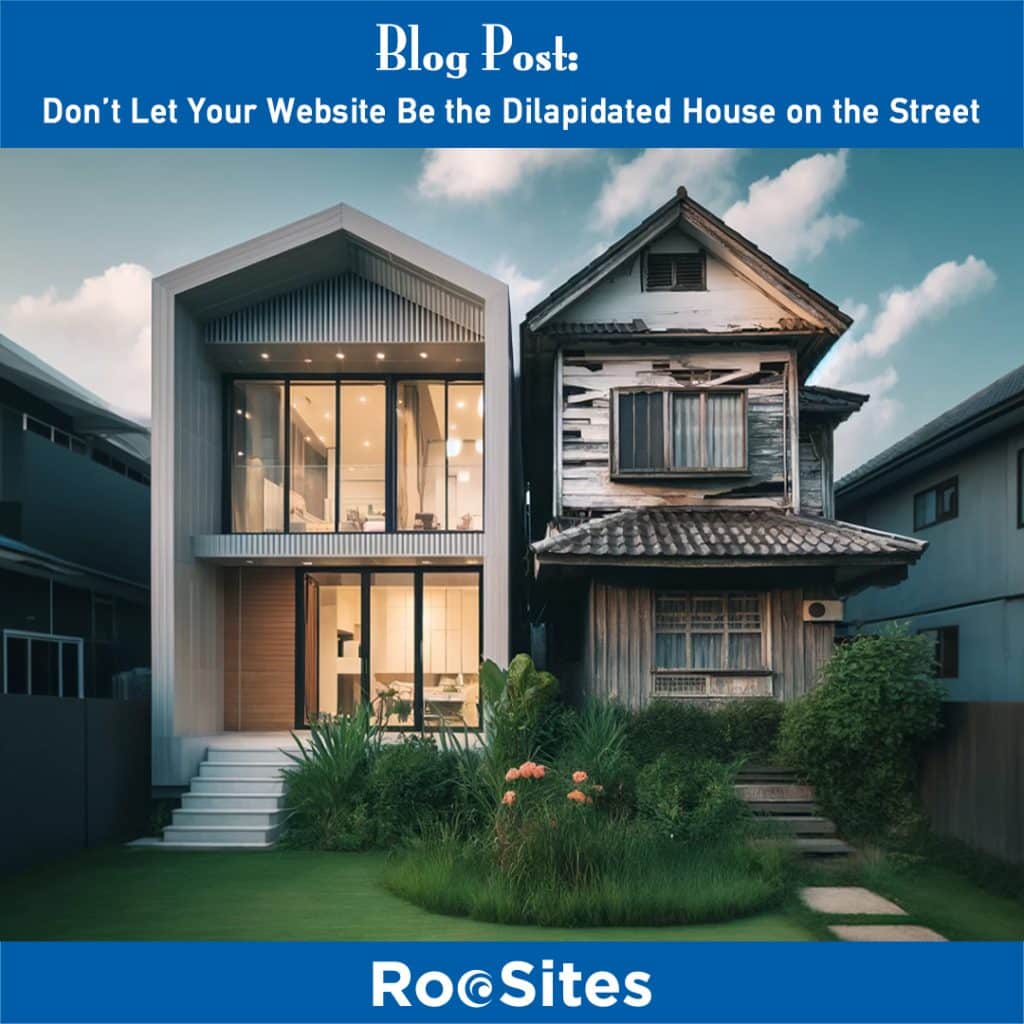
In my line of work at RooSites, I often come across websites that look like they haven’t been updated since the mid-90s. These sites are not only aesthetically unappealing but also fail to function properly on modern devices. They remind me of that neglected house – a digital eyesore amidst sleek, user-friendly, and responsive websites. If your website falls into this category, it’s time to take action. Here’s why you shouldn’t let your website be the dilapidated house on the street.
Your website is often the first point of contact potential customers have with your business. Just as a neglected house sends a message of disregard and abandonment, an outdated website can give the impression that your business is not keeping up with the times. Visitors might question the quality of your services or products if your online presence looks unprofessional.
Older websites often struggle to perform on modern devices. With the majority of web traffic coming from mobile devices, having a website that isn’t mobile-friendly can lead to a poor user experience. Broken links, slow load times, and difficult navigation can frustrate users and drive them away. Ensuring your site is responsive and functional on all devices is crucial for retaining visitors.
Search engines favor websites that are regularly updated and optimized for performance. An outdated website can suffer in search engine rankings, making it harder for potential customers to find you. Regular updates, fresh content, and proper SEO practices are essential for maintaining visibility online. Think of it as the digital equivalent of keeping your house in good repair – it boosts your curb appeal and keeps the visitors coming.
Just as a neglected house can become a target for vandals, an outdated website can be vulnerable to security threats. Older websites are more likely to have outdated software and plugins, which can be exploited by hackers. Keeping your website updated with the latest security measures protects your business and your customers’ data.
Your website is a reflection of your brand. A modern, well-maintained website conveys professionalism, reliability, and attention to detail. It shows that you care about your business and your customers. Just as homeowners take pride in maintaining their property, business owners should take pride in maintaining their online presence.
If your website is looking like the digital equivalent of a dilapidated house, it’s time for a renovation. At RooSites, we specialize in helping businesses revamp their online presence. From modern designs and responsive layouts to SEO optimization and security updates, we can help turn your outdated website into a sleek, functional, and user-friendly platform.
Don’t let your website be the dilapidated house on the street. Contact RooSites today and let us help you create an online presence that stands out for all the right reasons. Just as a well-maintained house can enhance the beauty of a neighborhood, a well-designed website can enhance the reputation and success of your business.
Remember, in today’s digital world, your website is more than just a virtual address – it’s your business’s home. Make sure it’s inviting, functional, and up-to-date, so you can welcome visitors with confidence and leave a lasting positive impression. Let’s build a better digital neighborhood, one beautiful, functional website at a time.
Based in Dunedin, Florida, Stirling Global Management specializes in Capture, Proposal, and Program Management in the Defense & Aerospace sectors. Their new site showcases their expertise and dedication to providing top-tier solutions in these critical fields. Explore their offerings and learn how they can help your business succeed at Stirling Global Management.
Located in Clearwater, Florida, Stage V Engineering manufactures the fastest racing components in the world! Their cutting-edge technology and commitment to excellence are now highlighted on their sleek new website. Discover their innovative products and see how they’re revolutionizing the racing industry at Stage V Engineering.
Visit these sites to learn more about these incredible companies and see the fantastic work we’re proud to support. At RooSites, we’re dedicated to helping businesses thrive with top-notch web solutions. Stay tuned for more exciting updates!